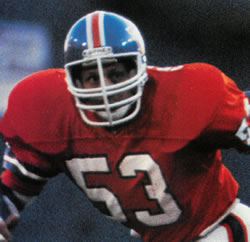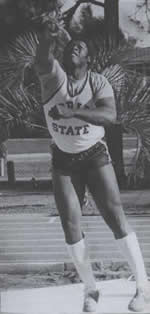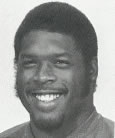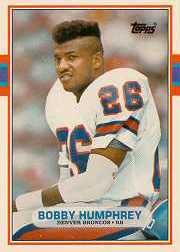I voted for the Hugos! I’m sure you’ve been dying to know where the all-important bloc of my single vote was going.
Novel: no vote. I bailed out of even trying to finish all of these candidates on time, as discussed previously. I ended up reading two of the six novels, instead favoring reading the other categories I knew I could finish. I’m planning on reading all of them soon-ish. It’s a pity, too, because discussing the novels was probably the only chance this post had of being interesting to anyone who might reasonably read this other than me.
Novella:
- “Palimpsest” by Charles Stross
- The God Engines by John Scalzi
- The Women of Nell Gwynne’s by Kage Baker
- Shambling Towards Hiroshima by James Morrow
- “Vishnu at the Cat Circus” by Ian McDonald
- “Act One” by Nancy Kress
This was sort of an odd category. I had problems with two of the six candidates as even being nominees for a sci-fi/fantasy award. I tend to like John Scalzi’s definition. Can’t find it on his blog but the idea was that it’s science fiction if the story could not take place without the science-fictional-or-fantastical aspect. If you try to re-work Dune to take place on Earth, you fail because the entire (fictional) landscape is intrinsically part of the story. On the other hand, Michael Chabon’s The Yiddish Policeman’s Union earned a Hugo nomination (and, in fact, a win) because it takes place in an alternate reality where part of Alaska is a Jewish state. But the above definition I don’t feel like it qualified. No, an Alaskan Jewish state does not exist, but neither does a giant white whale and its vengeful pursuer. Fiction does not imply science fiction, but if you stretch the definition enough, it does. Chabon’s story could have materially happened in a lot of other places or times, to my reading. Similarly, Baker’s and Morrow’s stories were both really only vaguely science fictional, and what there was probably could have been dropped without much change in the story. They were both terrific stories, but lost some points with me for not being particularly representative of the genre. The Scalzi and Stross stories both were great candidates. Absorbingly written, wonderful ideas. I ultimately went with “Palimpsest” by a narrow margin. I just liked the premise and execution just a little bit better.
Novellette:
- “The Island” by Peter Watts
- “It Takes Two” by Nicola Griffith
- “Eros, Philia, Agape” by Rachel Swirsky
- “Sinner, Baker, Fabulist, Priest; Red Mask, Black Mask, Gentleman, Beast,” by Eugie Foster
- “One of our Bastards is Missing” by Paul Cornell
- “Overtime” by Charles Stross
I think this was the toughest overall category. Really liked all six entries and spent a lot of time debating their merits. I couldn’t really get over “The Island”, though. It really blew me away. Lots of stories have covered the territory of humans swimming through unfathomably long times and distances, but something about Watts’ story captured it in an interesting way that’s really sticking with me.
Short Story:
- “Bridesicle” by Will McIntosh
- “The Bride of Frankenstein” by Mike Resnick
- “Non-Zero Probabilities” by N.K. Jemisin
- “Spar” by Kij Johnson
- “The Moment” by Lawrence M. Schoen
Related Work: No vote. A handful of interesting about-the-genre books I didn’t come close to having time to read.
Graphic Story:
- Batman: Whatever Happened to the Caped Crusader? Written by Neil Gaiman; Pencilled by Andy Kubert; Inked by Scott Williams
- Girl Genius, Volume 9: Agatha Heterodyne and the Heirs of the Storm Written by Kaja and Phil Foglio; Art by Phil Foglio; Colours by Cheyenne Wright
- Schlock Mercenary: The Longshoreman of the Apocalypse Written and Illustrated by Howard Tayler
- Captain Britain And MI13. Volume 3: Vampire State Written by Paul Cornell; Pencilled by Leonard Kirk with Mike Collins, Adrian Alphona and Ardian Syaf
- Fables Vol 12: The Dark Ages Written by Bill Willingham; Pencilled by Mark Buckingham; Art by Peter Gross and Andrew Pepoy, Michael Allred, David Hahn; Colour by Lee Loughridge and Laura Allred; Letters by Todd Klein
I didn’t want to vote for Neil Gaiman or a Batman story…but just couldn’t honestly argue for any of the others above it. I did read all of these but it’s a hard category to vote for. Only Gaiman’s story was a one-shot. All the others are parts of long series that to truly appreciate I’d have to read all the way from the beginning.
Dramatic Presentation, Long Form (i.e., movies):
- Moon
- District 9
- Up
- Avatar
- Star Trek
So I did end up seeing Avatar. I definitely liked it more than I thought I would, but was mostly right that it wasn’t ultimately the kind of movie I dig. Star Trek was a fair amount of fun, but mostly loud and stupid, I’m sad to say. Up probably doesn’t belong here (of course it was good, but not a favorite). District 9 was affecting, if a little gory for my taste. Nah, Moon is the easy winner. Quite good and definitely the kind of movie I want to see so much more of. They just don’t make these kinds of movies all that much: low budget, emphasis on story and performance. Make more! Entertain me!
Dramatic Presentation, Short Form: No vote. I’ve seen a few of the Dr. Who episodes that were up for this, but haven’t seen the other shows and am totally not up to speed on my SF TV watching, so I didn’t think I was qualified to give this category due consideration. I’m sure plenty of other voters have me covered.
Also no vote: editor (long form), editor (short form), professional artist, semiprozine, fan writer, fanzine, fan artist, Campbell Award (best new writer). Not qualified to judge any of these to my satisfaction. I was tempted to vote for Shaun Tan for the artist category despite this fact, because I love some of his books so much.
 KNOW YOUR 1980s DENVER BRONCOS
KNOW YOUR 1980s DENVER BRONCOS Drafted in the first round (14th overall) in 1974 by the Broncos, Randy rewarded the team’s high pick by becoming one of the greatest players in franchise history. Randy became a starting linebacker during his first season with the team and by his second year had made enough of an impact to be named to the Pro Bowl. By the late 1970s, the Broncos’ defense had become notoriously tough, earning the nickname The Orange Crush. Randy was one of its most feared defenders, making three straight Pro Bowls from 1977-1979 (he would play in three more in the 1980s, for a total of seven appearances) and earning All Pro honors in 1977 and 1978. In 1978 he was named the NFL Defensive Player of the Year. Randy continued his stellar play through his the 1983 season, his tenth and final campaign. He was inducted into the Broncos’ Ring of Fame in 1989. He’s also considered one of the greatest players in Ohio State University history, but I don’t hold that against him.
Drafted in the first round (14th overall) in 1974 by the Broncos, Randy rewarded the team’s high pick by becoming one of the greatest players in franchise history. Randy became a starting linebacker during his first season with the team and by his second year had made enough of an impact to be named to the Pro Bowl. By the late 1970s, the Broncos’ defense had become notoriously tough, earning the nickname The Orange Crush. Randy was one of its most feared defenders, making three straight Pro Bowls from 1977-1979 (he would play in three more in the 1980s, for a total of seven appearances) and earning All Pro honors in 1977 and 1978. In 1978 he was named the NFL Defensive Player of the Year. Randy continued his stellar play through his the 1983 season, his tenth and final campaign. He was inducted into the Broncos’ Ring of Fame in 1989. He’s also considered one of the greatest players in Ohio State University history, but I don’t hold that against him.


